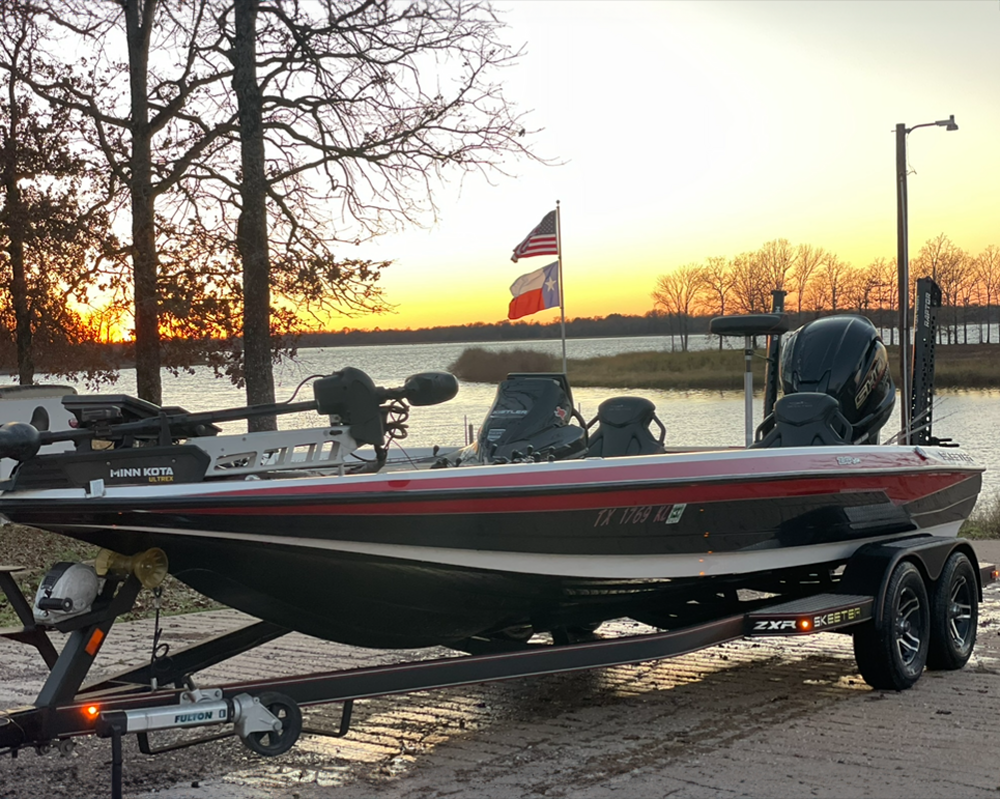Mapping Out Lake Fork: How GPS and Waypoints Can Improve Your Fishing Success

Hey y’all, Cap’n Ron here! As a fishing guide on the legendary Lake Fork, I’ve seen firsthand how a good fishing trip can go from “meh” to “wow” in the blink of an eye. A big part of that transformation is the technology we use to make fishing more productive and enjoyable. Specifically, GPS and waypoints are absolute game changers when it comes to navigating this massive lake and pinpointing where the bass and crappie are hiding. If you’re not using them, you’re missing out on a whole new level of fishing success.
Why GPS and Waypoints Matter on Lake Fork
Lake Fork is a big lake—over 27,000 acres big!—so knowing where the fish are can feel like finding a needle in a haystack, especially when you’re working with structures like submerged brush piles, drop-offs, and ledges. That’s where GPS and waypoints come into play.
How GPS and Waypoints Help You Mark Hot Spots
Whether you’re chasing bass or crappie, finding consistent fishing spots on Lake Fork is key to a successful day on the water. Let me break it down for you:
-
Identifying Structures: When you’re fishing on a lake like Fork, you’re constantly looking for structures like submerged brush piles, rock piles, and drop-offs—places where fish tend to gather. GPS allows you to map out these areas by marking precise waypoints. So, once you find a good spot, you can mark it and return without having to rely on your memory or guesswork. It’s all about precision.
-
Tracking Fish Movements: Fish don’t stay in one place forever, but they do follow patterns. GPS and waypoints help you track where the bass and crappie are moving at different times of the year. Once you start identifying certain areas where fish are more likely to congregate, you can use waypoints to follow their migration and ensure you’re fishing in the right place at the right time.
-
Avoiding Overfishing: With the right GPS system, you can create a map of Lake Fork that marks not just the best spots, but also the spots you’ve fished recently. This helps avoid overfishing and ensures you’re rotating between hot spots to give each one a chance to replenish.
Tips for Creating a Fishing Map of Lake Fork
Creating a personal fishing map of Lake Fork can take your fishing game to the next level. Here’s how you do it:
1. Use Your Sonar to Find Structures
Start by using your sonar or fish finder to locate structures like drop-offs, submerged brush piles, and underwater points. These are your prime fishing areas. When you find something promising, mark that spot on your GPS as a waypoint.
Don’t just mark the spots where you catch fish. Mark any interesting structures you come across, even if you don’t catch anything right away. It could be the key to future fishing trips.
2. Keep Track of Seasonal Changes
As seasons change, so does fish behavior. Crappie tend to spawn in shallow waters in the spring, while bass move deeper in the summer. If you fish regularly, make sure to add seasonal markers to your map. Note where bass are holding during the pre-spawn, spawn, and post-spawn periods. Likewise, crappie will follow their own seasonal patterns, so make sure you mark where they are hanging out throughout the year.
3. Add Depth and Water Temp Data
When you create your fishing map, don’t forget to add depth information and water temperature to your waypoints. Bass and crappie are known to prefer specific depths and water temps, so having this data on hand will allow you to hit those sweet spots every time.
4. Group Waypoints by Type
When you set waypoints on your GPS, categorize them by type—brush piles, deep points, submerged rocks, and so on. This will allow you to quickly navigate to the type of fishing you’re after, whether you’re targeting bass on ledges or crappie near brush.
The Bottom Line
Lake Fork is one of the best bass and crappie lakes in the country, but it’s also a large body of water with many hidden treasures. GPS and waypoints are not just tools—they’re your ticket to a more efficient, productive, and enjoyable fishing experience. By mapping out key locations, structures, and seasonal spots, you can turn a regular day on the lake into a successful one.
If you’re looking to learn more about how to make the most of electronics like GPS and sonar, or if you want a guided fishing trip on Lake Fork, give me a shout! There’s always room on the boat for another fisherman ready to explore the best fishing spots on the lake.
Tight lines,
Cap’n Ron
